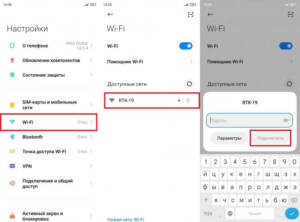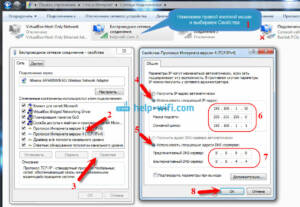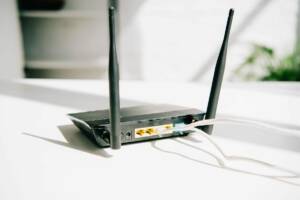Understanding the reasons for lack of Internet access
There may be various reasons for not having access to the Internet. Some of them may be related to network settings, while others may be related to the equipment and service provider. For example, Wi-Fi problems may occur due to incorrect router settings or poor signal quality. Internet access problems may also occur due to a provider disconnection or equipment problems. Therefore, before you start setting up a network without Internet access, you need to understand the causes of the problems. If the reason is related to network settings, it is better to seek help from a specialist who can help solve the problem. If the reason is related to the provider or equipment, you need to contact them for help. When setting up a network without Internet access, you need to make sure that all settings are correct and that the equipment is working properly. It is also important to check for all necessary drivers and updates. If all settings are correct and the equipment is working properly, then there should be no problems with Internet access.
Checking network settings and updating drivers
If you are having problems connecting to a network without internet access, then the first step should be to check your network settings. Make sure that all network settings match your network and that your computer is configured to use the correct protocol.
If this does not help, then the next step should be to update the network card drivers. You need to make sure that you have the latest drivers for your network card installed.
Updating your drivers can help fix network connection problems. You can find the latest drivers on your network card manufacturer's website.
Checking your network settings and updating drivers can be critical factors when setting up a network without Internet access. Be careful when setting up your network and keep your drivers updated to avoid problems in the future.
Troubleshooting router and modem problems
If you are having problems connecting to the Internet, the first thing you need to do is check your router and modem settings. The devices may not be configured correctly or have some technical problems.
First, you should check whether the router and modem are turned on. If they are enabled, you need to check whether they are properly connected to each other and to the computer. If all connections are correct, then you can check the settings of the router and modem.
To check the router settings, you need to log into its interface using the IP address specified in the instructions. In the router interface, you can check the availability of an Internet connection, Wi-Fi settings and the password for accessing the network.
If the problem is with the modem, then you need to check your Internet connection settings. To do this, you need to log into the modem interface using the IP address specified in the instructions. In the modem interface, you can check your Internet connection settings, as well as the availability of a network address.
If after checking the device settings the problem is not resolved, you can try rebooting the router and modem. If this does not help, then you need to contact your Internet service provider for assistance.
Knowing the basics of network setup and knowing how to troubleshoot router and modem problems, you can set up your network yourself and not depend on your Internet service provider.
Using Alternative Internet Connection Methods
If you don't have access to the Internet via a wired connection or Wi-Fi, don't despair - there are alternative methods of connecting to the network. They can be useful when you are in places where there is usually no Internet access.
One such method is using a mobile phone as a modem. This is possible thanks to the “personal hot spot” function, which allows you to use your smartphone as an Internet access point. To do this, you need to activate this function and connect your phone to your computer or laptop via a USB cable or Bluetooth.
Another way is to use wireless routers. They can run on batteries, making them mobile, and connect to the Internet via a 3G or 4G network. This allows you to create your own Wi-Fi network and connect multiple devices to it.
Finally, you can use satellite Internet. This is a fairly expensive method, but it can be useful when there is no way to connect to other networks. To do this, you need to install an antenna and a modem that will receive a signal from the satellite.
So, if you don't have access to the internet via a wired connection or Wi-Fi, don't despair - there are several alternative methods that can help you stay online.
How to secure a network without Internet access
Online security is one of the most important aspects, especially if you do not have access to the Internet. One of the simplest and most accessible methods of protection is to set a password on your Wi-Fi router. It is also important to regularly update your router software to close possible vulnerabilities.
If you are using a network without Internet access, you can restrict access to your computer by setting a password for your account. To do this, you need to go to your account settings and create a password. You can also restrict access to files and folders by setting a password on them.
Another important aspect of security is the use of antivirus software. Even without access to the Internet, your computer can become infected with viruses through external media such as flash drives or disks. Install antivirus software and update its database regularly.
Additionally, to secure a network without Internet access, you can use various tools, such as a firewall, which blocks unwanted traffic and protects the network from external attacks.
By following simple tips, you can secure your network without access to the Internet and protect your data from unauthorized access.
Recommendations for maintaining stable network operation
Setting up a network without Internet access may seem like a fairly simple task, but do not forget that the stable operation of the network depends on many factors. To make sure your network runs smoothly, there are a few best practices to follow.
1. Connect the equipment correctly. Make sure all cables are connected to the correct ports and are securely secured. If you are using a wireless router, make sure it is located in the center of the room and not blocked by walls or other obstacles.
2. Configure the IP addresses of the devices. In order for devices on a network to communicate with each other, they need to have unique IP addresses. Make sure each device has a unique IP address and that they are on the same subnet.
3. Set up network security. Although your network does not have access to the Internet, it may still be vulnerable to attacks from malicious users. Make sure you use passwords to access your network and set up a firewall to protect your network from external threats.
4. Carry out regular maintenance. Regularly test your equipment and update firmware to ensure that all devices are operating at peak performance.
By following these recommendations, you can ensure stable operation of your network without Internet access.
Read further:






